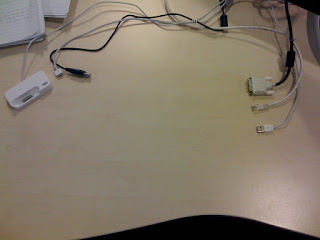My first Tweet:
 |
Ironic, as this post is about how Twitter is more than a procrastination tool!
|
While I freely admit to being all over social media, and a voracious consumer of content on Facebook and Instagram particularly, Twitter is probably my most active platform in relation to education.
When I ask people 'are you on Twitter', I either get the "ain't nobody got time for that" response, or "I have no interest in seeing what Kim Kardashian had for lunch."
Of course, both are valid arguments, as Twitter can be a very powerful time-wasting tool (as with any type of social media), and there are a plethora of boring people posting idiotic and inane content.
But Twitter can be a very powerful educational tool as well. Here are a couple of examples:
Twitter as a search engine
There are so many people on Twitter now that it can now produce a dramatic spread of ideas and perspectives. When teaching Digital Literacy, what better way than to show students how many different points of view there are?
Consider this. Put 'World War Two' into Google and you get some pretty standard results: Wikipedia, facts and statistics, related news stories.
Put it into Twitter, and you get an amazing array of stories (from all sides), images, blog posts and a whole lot of interesting stuff that would help you explore the more human side. For example, from that search, here's a list of the '10 definitive songs from World War Two'.
Twitter as a teacher resource/idea bank
Educators are one of the biggest groups of users on Twitter. So it makes sense that there would be some good sharing on there. Everything from lesson plans to multimedia to advice from experienced teachers (and inspiring thought leaders!).
There are two simple ways to do it: You can follow the right people and check in with them regularly to see what they're doing (here's a Tweet about the SAMR model); Or you can use a hashtag to find specific material (here's what's in the #mathchat stream).
Of course, there are other great uses for Twitter: as a PLN, as a backchannel, as a discussion space, or even as a writing challenge.
If you don't know how to use Twitter, or you don't have an account, I suggest you give it a go. There are plenty of helpful resources out there to help you get started. Here are a couple to try (funnily enough, all found through Twitter!):
Getting started with Twitter by Twitter.
Twitter 101 for Teachers by Mrs T
Are you using Twitter? How are you using it?


